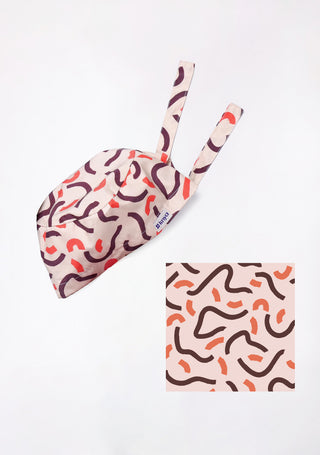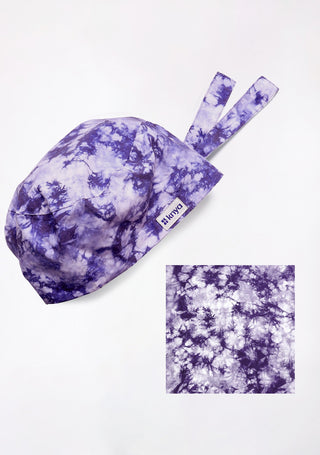A lab coat or a scrub set is no longer just a dress code, it's a part of your identity as a healthcare professional. Understanding the historical significance of the white coat connects you to a legacy of trust and healing. Choosing the right fabric empowers you to meet your day’s challenges with comfort and ease. And caring for your scrubs? That’s a matter of self-respect and hygiene.
The Lab Coat: A Historical Symbol of Science and Purity
From Butchers to Biologists
Interestingly, the early white coat didn’t begin in medicine; it was worn by butchers and scientists in the 1800s to keep their clothing clean. It wasn’t until the late 19th century that physicians adopted the white lab coat as a symbol of sterility, rationality, and the emerging credibility of modern medicine.
Prior to this, doctors often wore dark, formal clothing more fitting for Victorian mourning than a surgical suite. But with the rise of germ theory, white became synonymous with cleanliness. The white coat served as a visual contract: “I am clean, trained, and here to help.”
For our male healthcare professionals, we offer a wide range of comfortable and stylish scrubs for men, designed to enhance both comfort and professional image
The White Coat Ceremony
Fast forward to the 20th century, the white coat became a ceremonial rite of passage for medical students. This tradition underlines its role not just as attire, but as an emblem of ethical commitment and patient-centered care.
Today’s Shift: Beyond White
In recent years, there's been a push toward more practical and inclusive workwear. Colored coats, short coats, and even fashion-forward lab jackets are becoming common. White remains iconic but today, the emphasis is on function, comfort, and expression, especially with the rise of medical scrubs in daily clinical wear.
Choosing the Perfect Fabric for Your Medical Scrubs: Comfort Meets Performance
The ideal scrub is a powerful ally in a healthcare professional’s daily routine. It's breathable during double shifts, easy to disinfect after high-exposure procedures, and flexible enough for physical work all while presenting a professional appearance.
Common Fabric Types in Scrubs
Let’s decode the most popular scrub fabrics:
Cotton
-
Pros: Soft, breathable, natural
-
Cons: Wrinkles easily, slower to dry
-
Best for: Sensitive skin, light-duty work, or cooler climates
Polyester
-
Pros: Durable, wrinkle-resistant, fast-drying
-
Cons: Less breathable; can feel warm
-
Best for: High-demand shifts, low-maintenance needs
Spandex/Elastane Blends
-
Pros: Stretchy, allows full range of motion
-
Cons: Prone to wear with frequent hot washes
-
Best for: Active roles (nurses, ER staff, techs)
Rayon (Viscose)
-
Pros: Soft with a luxurious drape
-
Cons: Can be delicate and less durable
- Best for: Office-based clinical staff or short shifts
Ready to explore our amazing scrubs collection? Browse the best here
Choosing the Right Blend
Look for multi-blend fabrics that combine the best of all worlds. A popular option is poly-cotton-spandex breathable, resilient, and comfortable. Advanced fabrics today also come with moisture-wicking, antimicrobial, and anti-odor properties.
How to Properly Care for Your Medical Scrubs?
Your scrubs fight battles you never see against bacteria, bloodborne pathogens, and workplace grime. Caring for them correctly not only maintains hygiene but extends their life and effectiveness.
Pre-Wash Preparation
-
Turn inside out to preserve colors and reduce surface abrasion
-
Soak in cold water with a mild disinfectant for 15 minutes if heavily soiled
-
Separate scrubs from household clothes to prevent cross-contamination
The Washing Process
-
Use hot water (60°C or 140°F) to kill bacteria unless your label warns against it
-
Opt for a disinfecting detergent preferably medical-grade or antibacterial
-
Avoid bleach unless necessary it breaks down fibers over time
Drying Tips
-
Tumble dry on medium heat if the fabric allows; high heat may damage stretch fibers
-
Line-dry under sunlight when possible,UV rays naturally disinfect and reduce odor
Ironing and Storage
-
Use a warm iron if needed for cotton-based scrubs
-
Store in a clean, closed space avoid tossing them into gym bags or the backseat of your car post-shift
Modern Innovations in Scrubs: Where Comfort Meets Personality
Scrubs have come a long way from the basic green or blue hospital garb. Today, the scrub market offers options that are functional yet fashionable.
Design Trends
-
Jogger-style scrub pants
-
Fitted V-neck or mandarin collar tops
-
Contrasting stitching and piping for flair
Added Features
-
Hidden zipper pockets for phones
-
Pen holders and ID badge loops
-
Anti-wrinkle finishes
- Splash-resistant coatings












